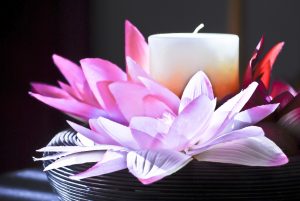Should You Create a Meditation Space in Your Home?
As a Feng Shui consultant, this is a question that I get over and over again. After all, most of us know by now how important meditation is to a fulfilling life. Taking that time – ideally daily — to get still, with the intention of connecting to yourself and Spirit, I have found to be imperative to cultivating a feeling of peace, clarity, and joy. Personally, when I made the commitment to meditate for fifteen to twenty minutes each and every day, my life took on a different kind of “flow.”
and over again. After all, most of us know by now how important meditation is to a fulfilling life. Taking that time – ideally daily — to get still, with the intention of connecting to yourself and Spirit, I have found to be imperative to cultivating a feeling of peace, clarity, and joy. Personally, when I made the commitment to meditate for fifteen to twenty minutes each and every day, my life took on a different kind of “flow.”
Because I have a regular meditation practice, then you may assume that I have a particular space for meditation, maybe one with lovely pillows and an altar and candles. So you may be surprised when I tell you that, no, I don’t.
I do have two dedicated spots for meditation. But you wouldn’t walk into my house and say, “Great meditation space!” One is in my backyard in my Adirondack chair beneath some trees. The other is on my living room sofa.
The truth is not every house and not every person needs a “fancy” spot to meditate. All you really need is somewhere you can get comfortable and not be disturbed. After all, meditation is about letting the senses go by tuning out the world so that you can tune into the “inner.” Sometimes I even meditate in my (parked) car or in appointment waiting rooms, if my morning meditation got cut short.
This being said, if you are longing for a designated spot to meditate and your home is conducive to it, go for it! I’ve walked into meditation rooms that felt so sacred you could hear a pin drop on the sheepskin rugs! I’ve seen altars with every deity known to this dimension set out intentionally and with a love that would bring tears to your eyes.
The problem I see clients run into is that they think a meditation space will make them meditate. And they use the excuse that they don’t have a place to meditate to not meditate.
If you fall in that category, consider yourself busted, and start meditating stat by simply sitting somewhere, anywhere, where you can close your eyes and go inward. Phone timers work wonders to keep you disciplined and focused.
On the other hand, if you’d like to set up a space, here are some suggestions:
- Choose a pillow, chair, rug, or blankets. I like to have my back supported, but I know some traditional meditation practitioners who promote sitting cross-legged with a straight spine, chin slightly down. If this is your choice, consider a pillow beneath your sit-bones so that your knees are slightly below your hips to help your posture. Stacking or folding blankets works for this too. Furthermore, sheepskin rugs are favorites among the kundalini yoga set because wool, being a natural material, is said to help you “connect.” That being said, if you’d rather be in a comfortable chair or even sitting up in your bed with pillows behind your back, that’s fine!
- Consider an altar. An altar is a collection of objects that acts as a visual aid representing your spiritual life. Think of an altar as a personal tribute to your spiritual self and whatever supports that. When I have had altars, I placed special quotes, pictures of angels and fairies, fresh flowers, candles, Feng Shui symbols, and crystal mandalas there, simply because these things speak to me. An altar is simply a set point for the higher vibration you want to ach
 ieve.
ieve. - Make sure you select the right spot. I’ve seen bedrooms where the inhabitants have had to step over their altar in order to walk through, which is not ideal! Furthermore, it was low to the ground when everything else had height, which just felt off. Bottom line: if you’re “forcing” where the meditation space goes, it’s probably not the right spot. One client’s children kept overtaking her supposed meditation room with art projects, so eventually she just let the room be what it wanted to be – a space to create – and found other places to meditate. She was so relieved when I told her, “Great! The room found its purpose.”
Creating a meditation spot should be a pleasurable experience, so that you’re drawn to the spot for a respite and sacred connection. If it’s more work than play, no worries, your meditation practice depends on you, not your space.
Remember, if you’re practicing Feng Shui, then you’re creating a sacredness in your entire home, so consider that as well when deciding if a dedicated meditation space is right for you.
Katie is available for Skype and phone consultations including Feng Shui advice, intuitive readings, and Law of Attraction coaching. katierogers777@gmail.com




